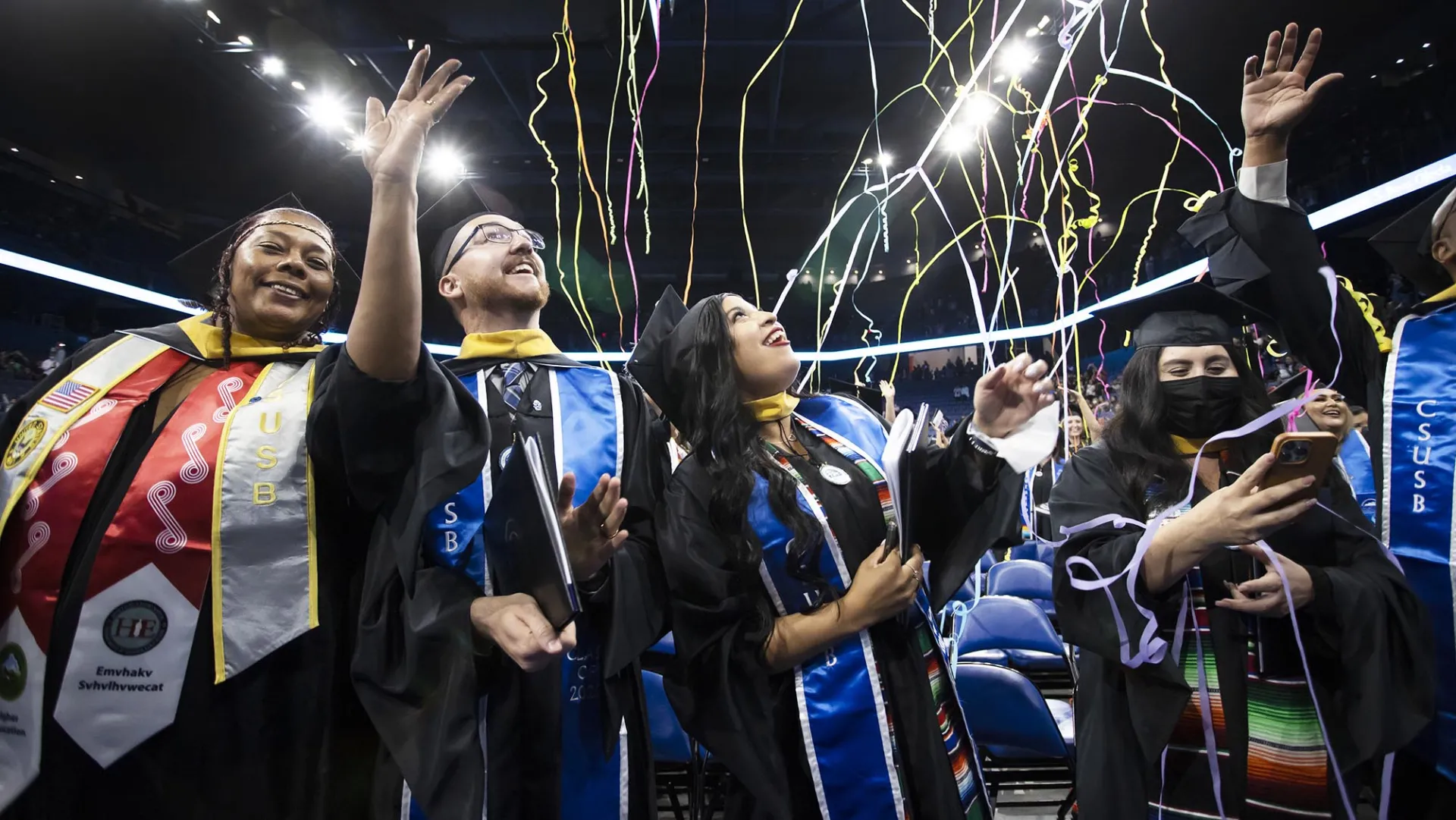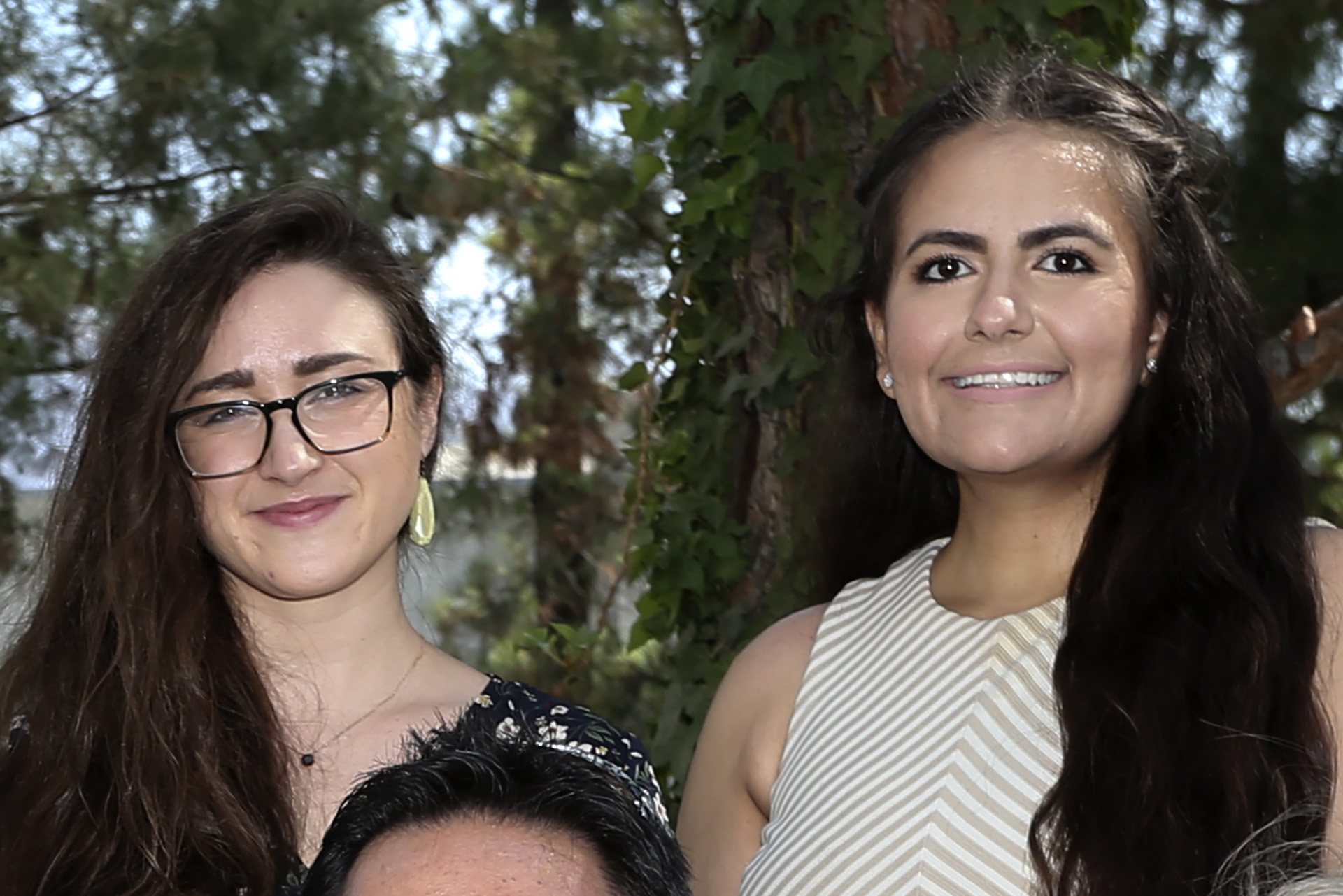Joe Gutierrez | Office of Strategic Communication | (909) 537-3007 | joeg@csusb.edu

A program, developed by two Cal State San Bernardino professors and their colleague at Cal State Los Angeles, to decrease equity gaps in degree completion by California State University students is the recipient of the CSU’s Creating Responsive, Equitable, Active Teaching and Engagement (CREATE) Award.
With the $125,000 award, co-principal investigators Manpreet Dhillon Brar and Stacy Morris, both assistant professors of child development at CSUSB, and Jessica Morales-Chicas, associate professor of child and family studies at Cal State LA, will launch this fall the pilot program at 10 CSU campuses in Southern California designed to take a holistic approach that centers on social justice and involves students, faculty and staff.

“We created a program that will be run in two phases to impact graduation rates as part of the Graduation Initiative 2025,” said Dhillon Brar, referring to the CSU effort that aims to increase graduation rates in all 23 CSU campuses. “We’re doing this by tackling all faculty, staff and students, and not just students, because faculty and staff tend to be sometimes gatekeepers for those students in achieving those graduation rates that we want in Graduation Initiative 2025.
“Our program is based on social justice education, and it’s going to use a pedagogy framework called intergroup dialogue,” Dhillon Brar said.
The program is one of five that is sharing the grant funded by the College Futures Foundation. The CSU Chancellor’s Office developed the CREATE Awards Program to recognize the “vitally important role faculty play in providing high-quality instruction and underscores the importance of accelerating momentum toward Graduation Initiative 2025 goals,” according to the award webpage.
Each of the proposals identified a common problem to advancing student success and closing equity gaps, articulated the ability to advance a solution, showed a strong emphasis on equity and demonstrated the ability to institutionalize their innovation across the CSU.
Beginning with the fall semester, the intergroup dialogue-based program will launch with the recruitment of a cohort of 35 students, faculty and staff at CSUSB, Cal State LA, Cal Poly Pomona, Cal State Fullerton, Cal State Northridge, Cal State Channel Islands, Cal State Dominguez Hills, Cal State Long Beach, Cal State San Marcos and San Diego State. All of the training will take place virtually, through Zoom.
During that first phase, the cohort will be trained to become facilitators in intergroup dialogue, or IGD, with the assistance of the program’s community partner, the Los Angeles-based nonprofit Universal Human Rights Initiative. IGD is “a framework that teaches people how to not only understand the systemic issues that impact us on a personal and institutional level, but also on how to take action in order to deal with these inequitable issues and concerns,” Dhillon Brar said.
Identifying and discussing barriers to equity and student achievement can sometimes reveal areas and topics that are points of conflict, so giving the cohort the skills to navigate through those difficult conversations, making sure people are heard and their perspectives understood is key. Without the foundation IGD provides, coming up with, let alone achieving, solutions to problems is almost impossible.
Through IGD, facilitators will develop the skills to have “really difficult conversations around inequity,” Dhillon Brar said. “So, when we talk about graduations rates, we know that there is so much else that’s involved in that because they’re disproportionally impacting students of color and students who are first generation. So, in increased understanding of dialogic tools and how to use them includes things like leaning in to discomfort, to use conflict as a way to make an impact, to develop skills like active listening, self-reflection, using dialogue over debate or discussion, which tend to be less productive when we’re thinking about making an impact on systemic issues.”
In this first phase, “participants will have an increased knowledge of perspective taking and understanding of worldview differences, such as between and within different groups, especially as we talk about roles within the CSU system,” Dhillon Brar said.
“Part of this pedagogy is learning how oppression exists at not just personal or interpersonal levels, but also at the systemic institutional level, where looking at policies and procedures that we may have may be impacting how people feel about it, their experiences, and learning to do something about it,” she said.
The second phase, to take place in the spring semester, will have members of the cohort work in smaller groups at their home campuses create action projects to tackle three areas in the Graduation Initiative: student engagement and well-being, data-informed decision making, and administrative barriers.
Morris said that the hope is in the second phase that students, faculty and staff will work together in groups where possible. “We’re hoping that the power dynamic in those groups will be examined, too,” she said “Oftentimes, it’s easy for faculty to take the lead and take charge. In these groups, we’re hoping that they examine the power dynamics, and students have the opportunity to contribute, and be listened to, and take charge, and lead on the issues they see on their campuses, as well, for faculty to examine their roles and to leave space for students.”
Also working in coalitions, rather than in silos of students or staff or faculty only, is far more effective and ensures that the concerns and perspectives of each of the constituencies are considered and addressed. “We’re really hoping that, especially, when it comes to the actions that students, staff and faculty are taking action to address these three different goals of the Grad Initiative in coalitions,” Dhillon Brar said.
Dhillon Brar said the cohort’s action projects have the potential to impact “upwards of 200, 300, 400 people. For example, someone might choose to do the student engagement and well-being task force action project. And they might end up holding intergroup dialogue at their own campuses, which might get 50 participants.”
And that shows how the program is scalable for all 23 CSU campuses. “The scale up from these 35 core folks we’ll target and train in intergroup dialogue presentation will then impact many different stakeholders at their own campuses in the spring semester,” she said.
“The eventual goal is to have all faculty and student leaders and administrative staff to be trained in intergroup dialogue and intergroup dialogue facilitation,” Dhillon Brar said. “It takes us through a four-stage model that takes us through not only our own personal self-reflection of where we are, how we got there and how that might impact our experiences, but also looks at systemic oppression and systemic issues that are impacting these inequities, and then to take action.”
Throughout both phases, the co-PIs will monitor and evaluate the progress of the program.
“We are researchers and we want to make sure there is proof of concept that’s being shown,” Dhillon Brar said. “And for the three of us who are co-PIs, our goal is to do this across the CSU system. We have a plan to scale this up, where at first we’ll start with these 35 participants, who, in phase 2, go and impact on their own campuses with multiple participants, and then scale this up to all 23 campuses – and to make this bigger at CSUSB.”